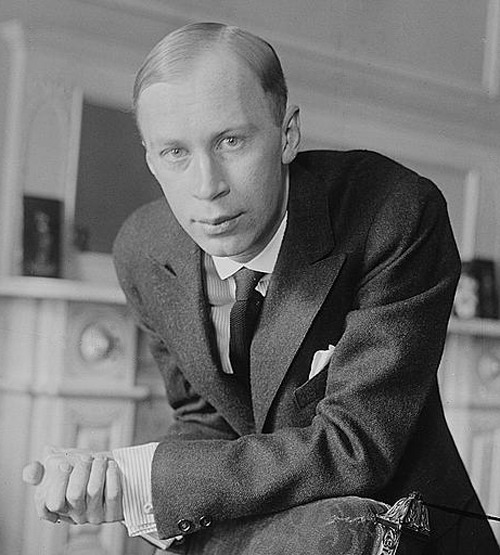
Serguei Prokofiev (1891-1953)
War Sonatas (N.6-7-8) & N.9
(in two volumes)
Piano Sonatas:
No. 6 in A major, Op. 82 (1940)
No. 7 in B♭ major, Op. 83 (1942)
No. 8 in B♭ major, Op. 84 (1944)
No. 9 in C major, Op. 103 (1946-1947)
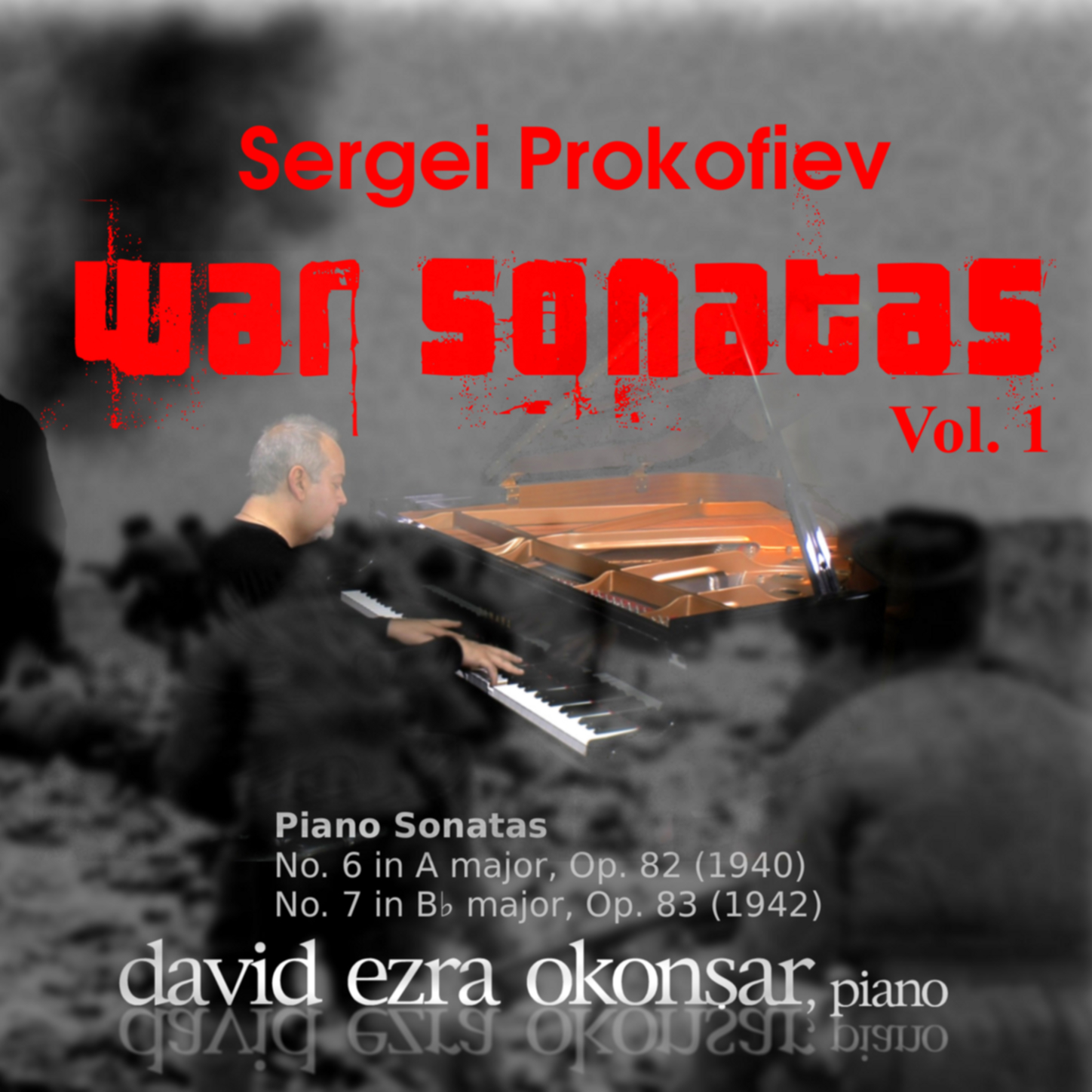
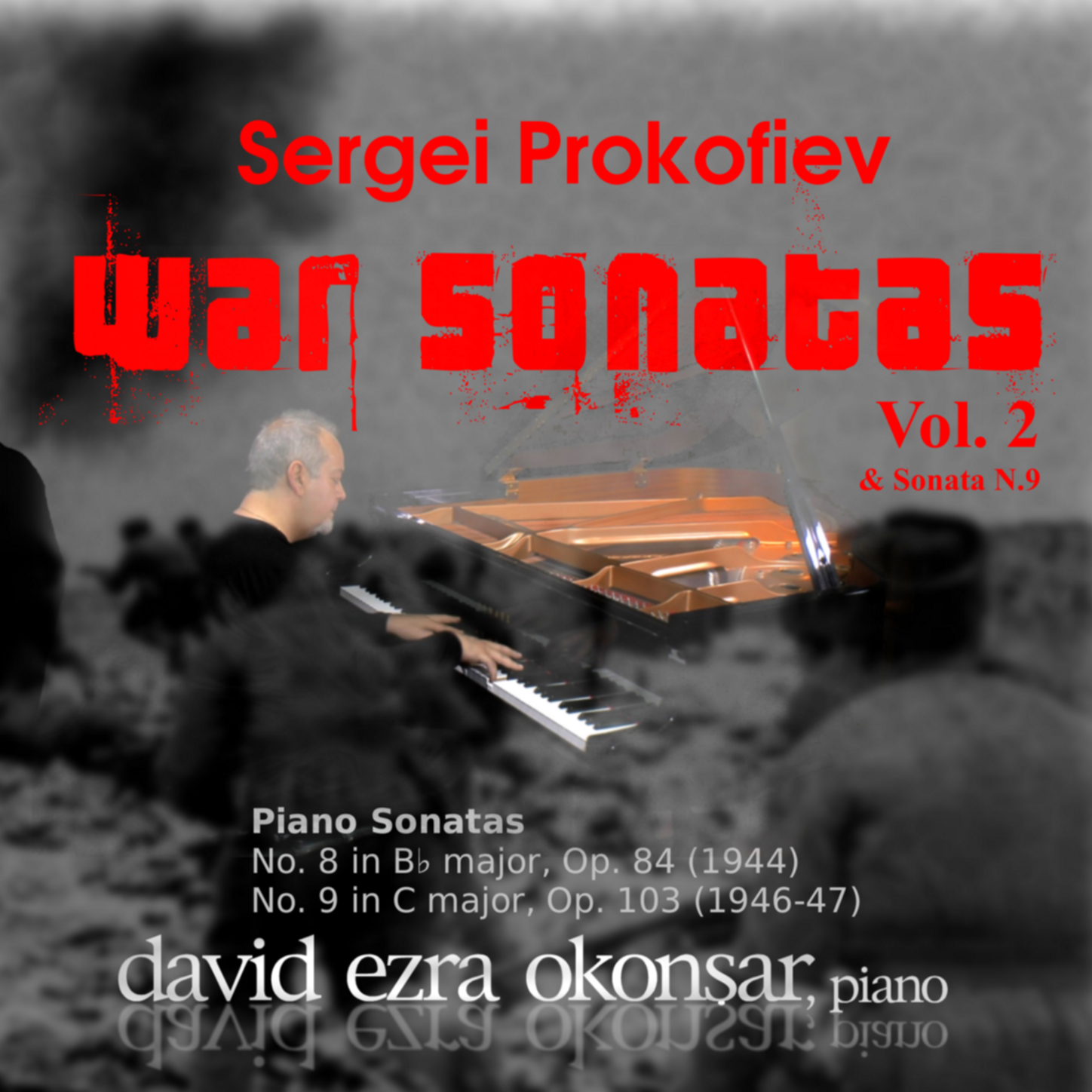
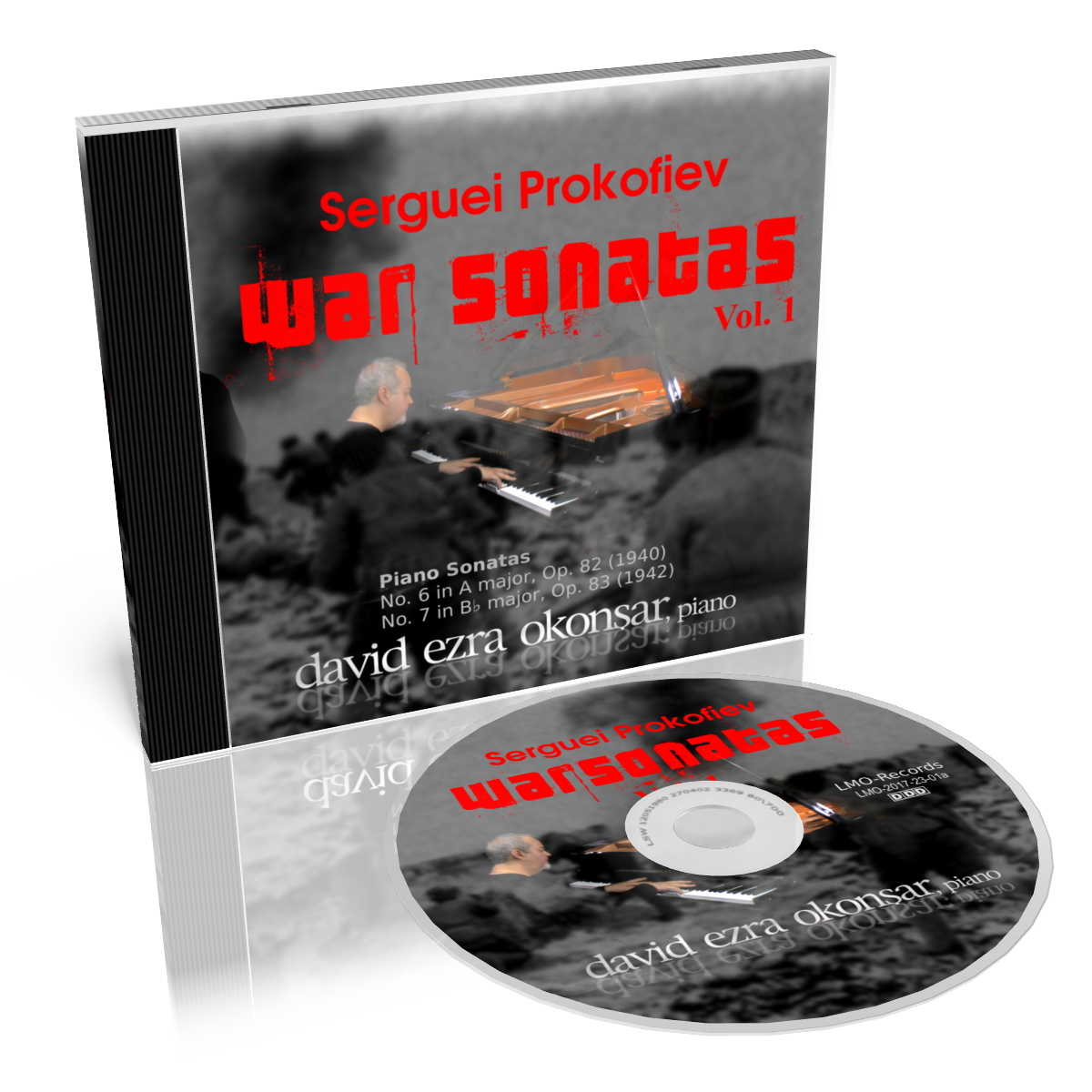
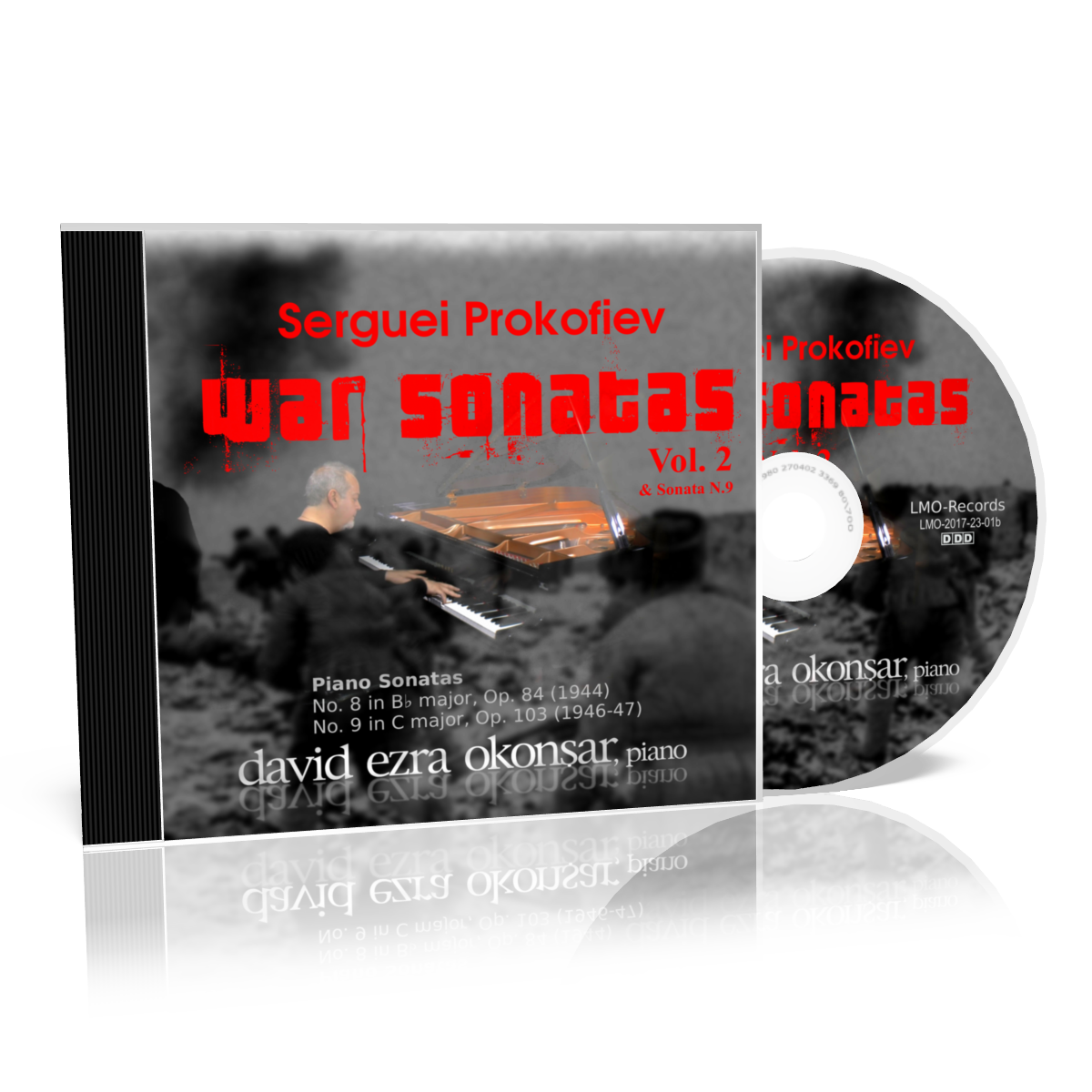
|
The "War Sonatas" by Prokofiev and Sonata N.9 After spending some time in the United States, then Germany and Paris, Prokofiev returned to Soviet Russia which he left after the revolution. Sixteen years passed before he composed his next Sonata: number 6 in A major op.82. This work was going to be the first of a series of three to be called "The War Sonatas". He cherished the idea of thinking about the Sonatas 6, 7 and 8 as a huge "sonata" in eleven movements. According to Myra Mendelssohn, Prokofiev got this idea when reading Romain Rolland on Beethoven. Finished in 1942, the Sonata number 7 in B-flat major op.83 is the most popular of the three, while the last "War Sonata": N.8 in B-flat major, is the most complex. Despite its huge proportions and presenting some serious technical challenges to the performer, Piano Sonata No. 9 in C major, Op. 103 (1946-47) is extremely refined and "purified". The settling down and purification of the last period of Prokofiev can be clearly seen in that work. Piano Sonata No. 6 in A major, Op. 82 (1940) The Piano Sonata No. 6 in A major, Op. 82 (1940) was first performed on April 8, 1940 in Moscow. The first performer other than the composer was Sviatoslav Richter. The young pianist relates: "I was astonished by the amazing clarity of style and the perfect construction of this music. I have never heard anything like this before. With a barbaric boldness the composer breaks with the romantic role models to give life to his music with the devastating urges of the twentieth century." The word "barbaric" is actually not inappropriate for this music. Here, Prokofiev, undoubtedly impressed by the world in war, gets into a kind of violence in his musical language as well as a sort of radicalism unseen in his works since he returned to the USSR. Allegro moderato The theme, in alternating minor - major thirds is hard, nervous and sharp edged. It is also one of the most characteristic ones of the composer. After a section of alternating octaves and chords in both hands, piano, a second theme appears with an amazing purity and softness. A tender melody in unison at both hands. The ecriture, from linear, becomes gradually compacted and tormented. Troubling triplets at the low range conclude the exposition section of the movement. In the development section, the mixture of threads and anxious drives is expressed with repeated notes. The dramatic content of this section is based on the opposition of the lyrical second theme always scattered with the "demoniacal" thirds which constitute the main element of the first theme. The cruelty of the discourse raises with harsh chords and glissandos. Then the tension falls to more serene harmonies and the development section also ends with the staccato triplet figures at the basses. The shortened re-exposition, taken one octave lower, re-states all those chaotic visions. Allegretto The second movement, in E major, is somewhat relaxed. Staccato chords present a wandering melody. A definitely vertical ecriture alternated with a melody in large steps. At the key signature change, from E major to C major, repeated chords over a strong left hand melody bring back the first E major theme with fast falling arpeggios in the left hand. The middle part, Meno mosso, is a melodic and linear one, yet it also includes elements from the previous theme. Tempo di valzer lentissimo Following the previous "quasi scherzando" movement, a passionate lyricism appears in this "waltz" in 9/8 time. With flexible and amorous chromaticism, it, nevertheless brings in the middle section a darker shade with the ostinato basses even though the elegiac right hand "tries to keep going." Vivace Back to the atrocities, the tormented figure as if cut with retch, starts a whirling hallucination. Between its various appearances other themes appear. One of them, the movement's main other theme, is melodic but others are angular and contorted. The middle section, Andante, presents the first theme of the first movement, but as a distant remembrance: veiled and wrapped in a haze. In the concluding parts, a merciless battle is engaged between the present movement's main themes and the first theme of the first movement. That last one will end the Sonata in an aggressive pacing. Piano Sonata No. 7 in B-flat major, Op. 83 (1942) (occasionally called the "Stalingrad") Completed in 1942, Piano Sonata No. 7 in B-flat major, Op. 83 is the most popular of Prokofiev's Sonatas. Shorter than the previous one, it is, nevertheless, analogous to it by its mixture of sheer anxiety, top rage and also meditative and lyrical sections. The first movement does not have a key signature, the others do have E major and B flat major keys. The sonata was premiered in Moscow on January 18, 1943 by Sviatoslav Richter. Allegro inquieto The movement is in the form: A B A' B A''. The first theme, presented in unison at both hands, is short, angular and agitated. It is promptly followed by a pounding of a four-notes long motivic cell that will have an important part in the development sections. The initial A section is partly in a horizontal ecriture, sometimes polyphonic and other times with crudely dissonant sharp-edged chords. The movement, thereafter, is somewhat calming its pace with the reappearance of the four-notes motive on C, and, after a little outburst of energetic chords, it leads to the B section. This B section, Andantino, is in total contrast with the preceding one, it is suggesting a painful intimacy and a somehow undecided tonal orientation. With a poco a poco accelerando the A section returns, this time intensified in its fury and percussive aggressiveness. The previously mentioned four-cell motive will reappear here in the low range and with longer timings of its notes, thus intensifying the dramatic impact with a rigid gravity. A shortened Andantino briefly appears leading to the last A section which will drop down and get lost in the low keys of the keyboard. Andante caloroso After the frightening asperity of the first movement and its almost atonal harmonization, the Andante caloroso brings a warmness in a deliciously tender setting of the E major and with a lyricism which seems to be thought for a cello and solo viola. A middle section starting with a fast scale brings, again, the torments and horrors which spread through the entire work. Obsessive and hallucinating ostinato notes with wandering chords above and below may remind bells sounding. The Coda is a short reprise of the initial melody. Precipitato A very popular movement with its 7/8 setting and the ostinato interval of B-flat - C-sharp at the left hand. This minor third interval is always in conflict with the major settings of the right hand. It is a non-stop progression of chords, often built on a scale-wise motion of notes in B-flat major. The 7 eight motion is mostly grouped as 2 + 2 + 3. The accent on the left hand, on the C-sharp octave, is acting as a "disrupter" and it is de-stabilizing the right hand groups, thus creating all through the movement a feeling of unrest. Even though the movement is in ABC BA form, the B and C sections, remembrances of the first movement, do not create any distinct contrasts but integrate in the overall agitation. VOLUME 2
Piano Sonata No. 8 in B-flat major, Op. 84 (1944) The last piece of this gigantic triptych: the "War Sonatas" is certainly the most complex in its content: Piano Sonata No. 8 in B-flat major, Op. 84 (1944). It is more difficult for the listener, requiring a long sustained concentration to be fully appreciated. So its popularity is much less than the previous two. Sviatoslav Richter admirably described it: "a sort of heaviness, but this is due to its richness. Like a tree bending because of its fruits." The main difference between this Sonata and the ones number 6 and 7 is in its tendency towards introverted meditation, mostly in its first movement and also, partly, in the broadening of the musical discourse. It was premiered by Emil Guilels in 1944. Andante dolce Introverted, grave and serious music, expressed in a soft voice almost all through. A serene and melodic pace sometimes only partly animated. A section Poco piu animato presents a new motive, but again it does not create a sharp contrast. Even though whispering sixteenth notes appear and develop into arpeggios in various mixed tonalities the entire movement remains with some reserve. In the middle section an obsessive tension is created with a uniform rhythm of quarter notes which will soon "break into exploding" fast runs of arpeggios and scales. This will transport the initial melodic setting into some other "visionary" places, in the last A of the A-B-A form, the Coda, even though built on the same material as the beginning, will be much less serene than it. Andante sognando In D-flat major this movement is a beautifully calm, "dreaming" and noble Menuetto-like movement. There is an amazing refinement in the seemingly consonant harmonization. Also to be noted is the richness and the elaboration of the secondary voices. Vivace The last movement is rhythmical, "motorized", Toccata-like and long enough to "balance" the first. After the first exposition, just like in the first movement, a uniform rhythm section with quarter notes will raise to a hymn-like climax. Two softer sections: Pochissimo meno mosso and Andantino will cite some elements of the first movement. The last Vivace will bring a triumphal Coda. Piano Sonata No. 9 in C major, Op. 103 (1946-1947) Last completed work for the solo piano, the Sonata N.9 was composed during 1946-47 and dedicated to Sviatoslav Richter. "This will be "your" sonata.." said the composer, "..but do not expect a show piece. It is not made to strike the big hall of the (Moscow) Conservatory" Despite its huge proportions and presenting some serious technical challenges to the performer, this last Sonata is extremely refined and "purified". The settling down and purification of the last period of Prokofiev can be clearly seen in that work. In many points, one can trace a parallel with the noble style of Poulenc, a good old friend of Prokofiev. Allegretto It starts without haste in a limpid serenity. Its brisk impulsions, fast runs (glissando-like 32nds.) and jerky rhythms, start when going towards the second theme. Those figures will be extensively used later in the piece. The second theme, extremely purified, is not more than a few repeated notes. At the point "Poco meno mosso" appears a third motivic element which descends in chromatic steps on dotted rhythms. A short reminder of the first part, with the two first themes, leads to an accompaniment figure which slowly animates from eights to triplets and leads to the third theme, but also includes the glissando-like figures mentioned earlier. This section is in the well known Prokofiev piano style. A pianissimo transition in which the tonic rumbles at the left hand on two octaves span, brings the re-exposition in the key of B major. An unusual tonal layout, which however, returns to the main C major for the second theme and the Coda. Allegro strepitoso We have here again the composer's typically energetic, somehow dry and vigorous style. The swift run which starts the movement was actually foreshadowed at the end of the previous movement, in the low range and pianissimo. Interspersed with some nervous staccatos, it connects with the use of some rhythmical elements in a short section, to intentionally grotesque sonorities. Then, to staccatos figures again, this time followed up with chromatic figures. A short development with previously heard elements leads to a transitional part "Meno mosso" and then to an "Andantino" with a very tidy ecriture. This section opposes broken arpeggios of the right hand with the chromaticism of the left. Back to the first part but shortened and the Coda expires in a softened and rarefied line up. Andante tranquillo In the form ABA'B'A'', one can describe this movement as "day and night". First it is a "nocturne" in A-flat major, superb melody with a very tonal but not that conventional harmonizations. In the B part, Allegro sostenuto in C major, the light and energy of the "day" breaks in. This brings an agitation which is both happy and somewhat, mundane. In the following two sections, same ideas, will reappear with some variations throughout the movement. A': shortened; B': starting in the basses with the theme accompanied by quintuplets. The last apparition of A (A'') leads to a Coda where on several occasions a cell of four sixteenths shows as a presages of the Finale. Allegro con brio, ma non troppo presto Vivacious, dancing, scooting around, the Finale is made up from the cell previously heard at the end of the preceding movement. The other main motive is a small group of staccatos alternating between hands. A new theme, Poco meno mosso, combines several motivic elements in a generally ludicrous atmosphere. In the central part, Andantino in E-flat major, both hands play sometimes in unison in octaves. At the Allegretto, both themes of the principal part appear in inverse order, setting the ground for the re-exposition. During the vast Coda, made up out of an improvised figure from the beginning, the theme of the first movement reappear at the high ranges, backed up with quintuplets at the left hand. The following bars make the music fade in a harmonic haze. For his last Sonata, Prokofiev opted for an ending most discreet and reserved. D.E. Okonsar
|
||||||||||||
|
|
||||||||||||
|
